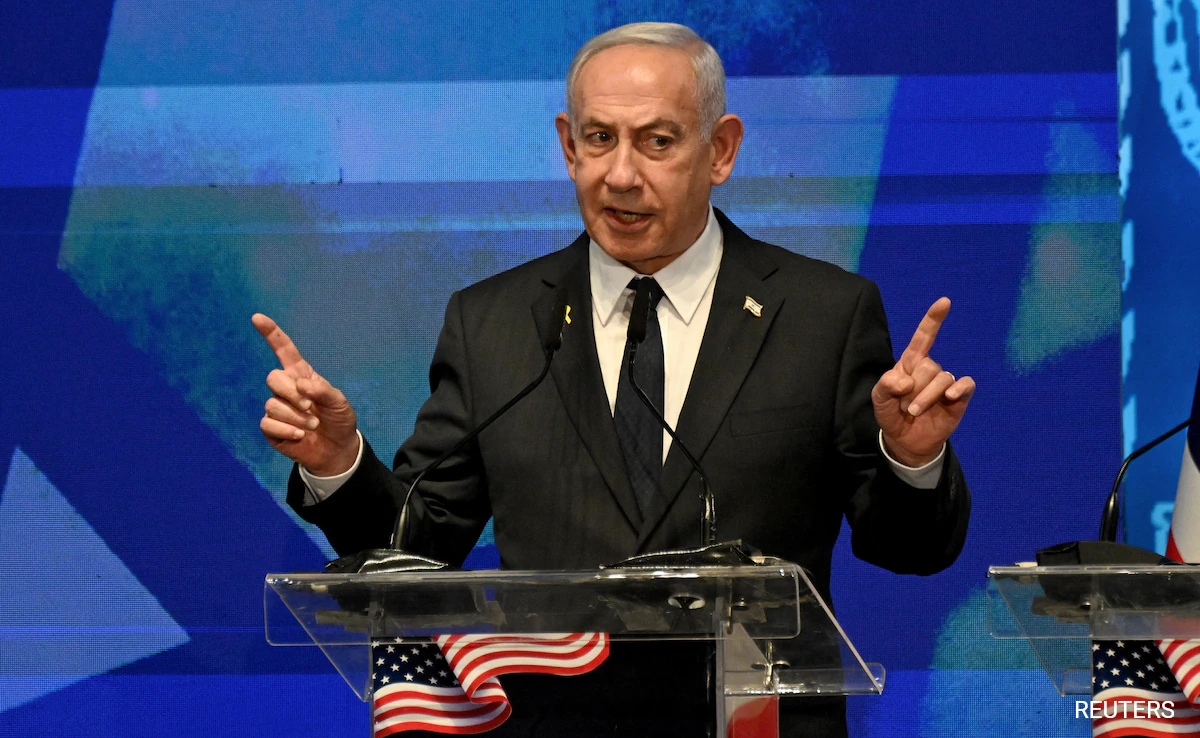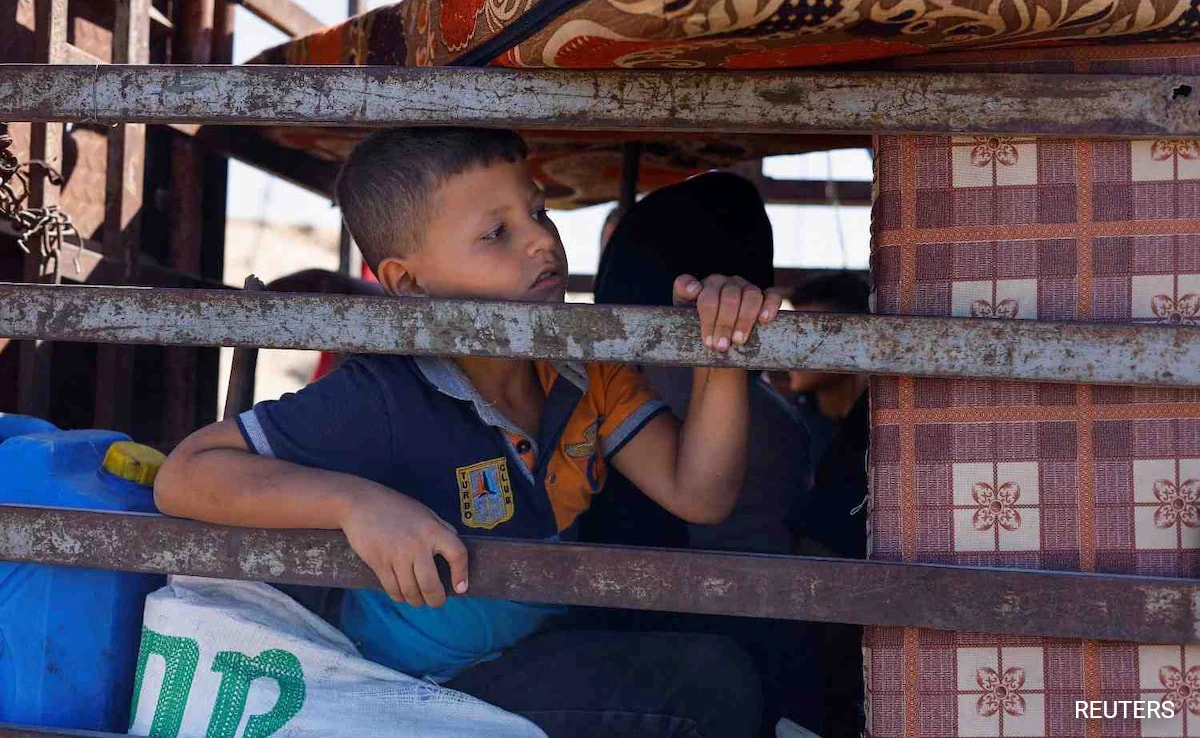While in Brussels on Thursday, Biden and other Western leaders discussed supporting countries neighboring Ukraine — Poland has received more than 2 million displaced Ukrainians — as well as plans to reduce Europe’s dependence on Russian energy. A major initiative that would deliver liquefied natural gas from the United States to the continent is expected to be announced Friday.
The battle for the Ukrainian capital, Kyiv, rages on as the war enters its second month, with counterattacks forcing Russian troops into defensive positions, according to U.S.-based military analysts. Ukrainian forces are likely to continue striking logistical assets in territory held by Russia, which would stretch the Kremlin’s supply lines and dampen morale among Russian forces, Britain said in a Thursday intelligence update.
In a video released Friday local time, Ukrainian President Volodymyr Zelensky praised his forces for thwarting Russian advances toward major population centers. “If Russia has known it would face that, I’m sure they would have definitely been afraid to come here,” he said, referring to the fierce Ukrainian resistance.
Here’s what to know
How many people have been killed in Ukraine? Here’s what we know.
Return to menuIn the month since Russia invaded Ukraine, military and civilian casualties have soared. But as the war drags on and the battle lines shift, no one — not even the United Nations, Ukrainian government or U.S. or NATO officials — can provide an accurate count of how many people have been injured or killed.
The few public estimates, including from Western officials, are just that — estimates — and vary widely amid the fog of war. Even the United States and NATO appear to differ over how many Russian troops may have died so far in the fighting. On Wednesday, a senior NATO official told reporters in Brussels that between 7,000 to 15,000 Russian forces have been killed.
The official, who spoke on the condition of anonymity under NATO ground rules, said the alliance estimates that 30,000 to 40,000 Russian troops have been killed, wounded or captured in Ukraine. It’s an estimate, the official said, based on the assumption that for every soldier killed, three are wounded.
In videos: Moments that captured the world’s attention after Russia invaded Ukraine
Return to menuA month into Russia’s invasion of Ukraine, Moscow’s advance has stalled around the capital, Kyiv, but made gains in the Donetsk region.
Here are some striking videos, some of which attracted viral attention, that have emerged from the conflict.
Ukraine alleges forced moves to Russia while Moscow cites influx of refugees
Return to menuUkrainian leaders again accused Russian forces of moving people to Russia against their will, while Moscow said hundreds of thousands of refugees have voluntarily fled east amid the war.
The U.N. refugee agency estimates some 270,000 Ukrainians have moved to Russia in the month since the Kremlin began its invasion of Ukraine. Leaders in both Ukraine and Russia give totals closer to 400,000 — but they offer very different explanations for the influx.
Ukraine’s Ministry of Foreign Affairs alleged in a statement Thursday that the Russian army has forcibly “deported” Ukrainian citizens, including thousands of residents of Mariupol, the port city devastated by Russian shelling and weeks of siege tactics. The foreign ministry accused Russia of confiscating people’s passports and suggested that the Kremlin wanted hostages to “put more political pressure Ukraine.”
Russian officials, in contrast, say they are helping a wave of refugees, many of them from the eastern Donbas region where some territory is run by pro-Russian separatists. Alexander Chupriyan, the acting head of Russia’s ministry of emergency situations, said daily counts of “refugees from the border areas” crossing into Russia have risen sharply, according to the ministry’s post online.
The United Nations also estimates 113,000 people from the east Ukrainian regions of Donetsk and Luhansk moved to Russia during a period of several days leading up to the war. Pro-Russian leaders in separatist areas ordered evacuations in February shortly before the invasion, while claiming Ukraine would attack — a manufactured crisis that drew skepticism from many residents.
Here’s the status of Ukrainian cities under Russian attack
Return to menuJoyce Lee contributed to this report.
Canada sanctions 160 Russian lawmakers; plans to export more energy to Europe
Return to menuTORONTO — Prime Minister Justin Trudeau said Thursday that Canada will impose sanctions on 160 members of the Russian Federation Council, the upper house of the country’s parliament, and will ban the export of certain goods to Russia to erode its military capabilities.
Canada’s energy minister, who was in Paris for meetings, also said Ottawa had the capacity to boost oil and gas exports this year to help European allies reduce their dependence on Russian energy.
“Canada and its partners and allies will continue to work in lockstep to hold Putin and Russian leadership accountable and always be there to support Ukraine and its people,” Trudeau told reporters in Brussels, where he was participating in emergency talks with NATO leaders.
Ottawa has levied sanctions on more than 960 people linked to Russian President Vladimir Putin since his annexation of Crimea in 2014.
Over the course of the year, Canada has the ability to increase energy exports by 300,000 barrels daily, the natural resources ministry said Thursday, adding that displacing Russian energy exports would not increase global emissions.
Trudeau said Canada will “continue to be increasing” its defense spending, but he did not provide specific details. The country’s defense spending in 2021 was nearly 1.4 percent of its gross domestic product, short of NATO’s target of 2 percent.
The federal government is expected to unveil a budget next month. Canada’s parliamentary budget watchdog told CTV News this week that the country would need to allocate $15 to $20 billion a year to meet the NATO target.
Cheng reported from Seoul.
.png)











 English (United States) ·
English (United States) ·  Turkish (Turkey) ·
Turkish (Turkey) ·